Proper sprinkler system design ensures efficient water distribution‚ balancing pressure and flow rates to meet specific irrigation needs while minimizing waste and preventing dry spots in landscapes.
1.1 Importance of Proper Sprinkler System Design
A properly designed sprinkler system is crucial for ensuring efficiency‚ safety‚ and reliability. It guarantees adequate water distribution‚ maintaining consistent pressure and flow rates across the entire system. Proper design minimizes water waste‚ reduces energy costs‚ and ensures the system operates effectively during emergencies. A well-planned system also prevents overwatering‚ which can harm plants and waste resources. Additionally‚ it ensures compliance with local regulations and fire safety standards‚ reducing potential legal and financial risks. By optimizing system performance‚ proper design enhances property protection and supports long-term sustainability. Investing in a well-designed sprinkler system is essential for maximizing its benefits and longevity.
1.2 Overview of Sprinkler System Components
A sprinkler system consists of several key components that work together to ensure efficient water distribution. The primary elements include the controller‚ which manages the system’s operation‚ and the pipes‚ which transport water across the property. Sprinklers are the endpoints that discharge water in a predetermined pattern. The water source‚ such as a municipal supply or well‚ provides the system with water. Additional components like pumps‚ valves‚ and sensors enhance functionality‚ while backflow preventers ensure water quality and safety. Each part plays a vital role in the system’s performance and reliability.
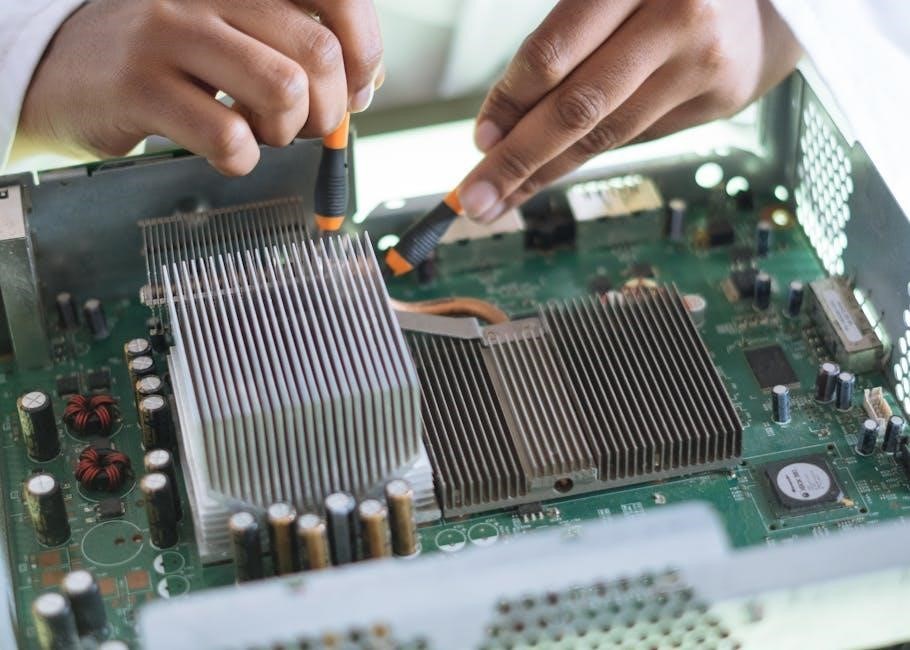
Types of Sprinkler Systems
Sprinkler systems are categorized into residential‚ commercial‚ and fire suppression systems‚ each designed for specific applications and water distribution needs‚ ensuring effective coverage and performance.
2.1 Residential Sprinkler Systems
Residential sprinkler systems are designed for lawn and garden irrigation‚ offering efficient water distribution and time-saving operation. These systems are typically automated‚ with timers and sensors optimizing water usage. They are ideal for maintaining uniform grass coverage and ensuring plant health. Residential systems often include pop-up sprinklers or fixed nozzles‚ tailored to yard size and shape. Motion sensors and rain sensors can enhance water efficiency‚ while proper installation ensures minimal waste. Regular maintenance‚ such as cleaning nozzles and checking for leaks‚ is essential for longevity. These systems are cost-effective and environmentally friendly‚ contributing to beautiful landscapes and increased property value.
2.2 Commercial Sprinkler Systems
Commercial sprinkler systems are designed for large-scale irrigation‚ catering to industrial‚ agricultural‚ and municipal needs. These systems are built to cover expansive areas like parks‚ sports fields‚ and farms‚ ensuring efficient water distribution. They often utilize high-flow sprinklers and advanced controllers to manage water pressure and flow rate. Commercial systems prioritize durability and scalability‚ incorporating heavy-duty components and modular designs. Water efficiency is maximized through features like weather sensors and soil moisture monitoring. Professional installation and regular maintenance are crucial to ensure optimal performance and minimize operational costs. These systems are tailored to meet specific site requirements‚ balancing functionality and environmental sustainability effectively.
2.3 Fire Suppression Sprinkler Systems
Fire suppression sprinkler systems are engineered to protect life and property by automatically detecting and controlling fires. These systems are typically installed in commercial and industrial buildings‚ activating when heat from a fire causes the sprinkler head to open. They are categorized into types such as wet‚ dry‚ pre-action‚ and clean agent systems‚ each suited for specific environments. Proper design ensures compliance with fire safety codes like NFPA 13 and 24. Regular maintenance and testing are critical to ensure system reliability. Fire suppression sprinklers minimize fire damage‚ enabling safe evacuation and protecting assets. Their effectiveness is proven in reducing fire-related risks and ensuring business continuity.

Design Principles for Sprinkler Systems
Proper sprinkler system design ensures water supply‚ pressure‚ and distribution meet fire suppression needs. Key principles include hydraulic calculations‚ system balancing‚ and material selection for reliability and efficiency.
3.1 Determining System Capacity
Determining system capacity involves calculating the total water supply‚ pressure‚ and flow rate required to meet fire suppression or irrigation needs. Factors include landscape type‚ climate‚ soil conditions‚ and peak demand. Accurate measurements ensure the system delivers the correct water volume. Hydraulic analysis and GIS mapping tools help assess water distribution patterns. Proper capacity sizing prevents overwatering and ensures efficient resource use. This step is critical for balancing system performance‚ water efficiency‚ and cost-effectiveness. précis calculation methods and software tools streamline the process‚ ensuring optimal design outcomes. Capacity determination lays the foundation for a reliable and functional sprinkler system.
3.2 Hydraulic Design Considerations
Hydraulic design ensures the sprinkler system operates within optimal pressure and flow rates. Key considerations include water source capacity‚ pipe sizing‚ and friction loss calculations. The Hazen-Williams equation is often used to determine pressure drop in pipes. Proper design balances pressure requirements across zones to maintain uniform water distribution. Velocity limits are set to prevent erosion and noise in pipes. Surge protection may be necessary to manage sudden changes in water flow. Hydraulic analysis tools‚ like EPANET or specialized software‚ aid in system modeling and performance prediction. Accurate hydraulic design ensures reliable operation‚ water efficiency‚ and long-term system durability. Proper planning minimizes energy losses and enhances overall system performance.
3.3 Pressure Loss Calculations
Pressure loss calculations are critical for ensuring the sprinkler system delivers water at the required pressure. Factors such as pipe friction‚ fittings‚ and elevation changes contribute to pressure loss. The Hazen-Williams equation is commonly used to calculate friction losses. Accurate calculations ensure the system maintains adequate pressure at each sprinkler head. Underestimating losses can lead to inadequate coverage‚ while overestimating may result in oversized pipes. Proper calculation methods‚ including velocity and flow rate considerations‚ are essential for system efficiency. Regular testing and adjustments are recommended to validate pressure loss predictions and ensure optimal system performance over time. This ensures reliable fire suppression or irrigation.
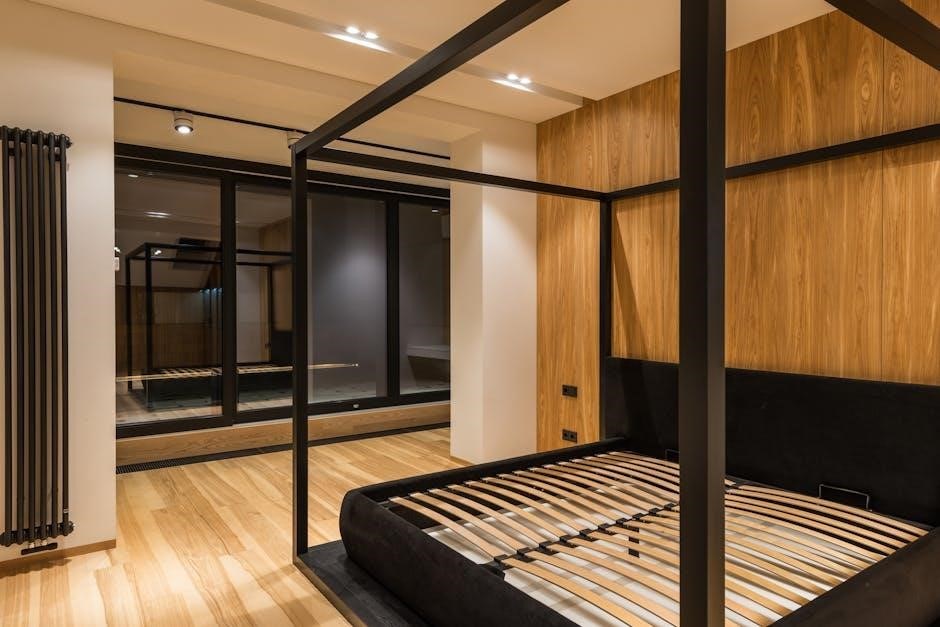
Key Components of Sprinkler Systems
The key components include controllers‚ sensors‚ pipes‚ sprinkler nozzles‚ pumps‚ and valves. These elements work together to ensure efficient water distribution and system operation. Proper installation and maintenance of these components are crucial for reliable performance and safety.
4.1 Sprinkler Nozzles and Their Types
Sprinkler nozzles are critical components in sprinkler system design‚ determining water distribution patterns and efficiency. Common types include fixed spray nozzles‚ adjustable spray nozzles‚ impact sprinklers‚ and mist nozzles. Fixed spray nozzles provide uniform coverage in preset patterns‚ while adjustable nozzles allow customization of spray angles and radii. Impact sprinklers are durable and ideal for large areas‚ operating with a rotating arm. Mist nozzles are used for precise watering in smaller spaces. Proper nozzle selection depends on water pressure‚ flow rate‚ and application requirements. Choosing the right nozzle ensures optimal water distribution‚ conservation‚ and system performance.
4.2 Pipes and Fittings
Pipes and fittings are essential for distributing water efficiently in sprinkler systems. Common materials include PVC‚ Polyethylene‚ and galvanized steel‚ each offering durability‚ flexibility‚ or corrosion resistance. Pipe sizing depends on water flow rates and pressure requirements. Fittings‚ such as couplers‚ elbows‚ and tees‚ connect pipes and enable system customization. Proper selection ensures minimal pressure loss and leak prevention. Best practices include using pressure-rated components and adhering to local plumbing codes. Regular inspection and maintenance of pipes and fittings are crucial for long-term system reliability and optimal water distribution performance.
4.3 Valves and Backflow Preventers
Valves and backflow preventers are critical components in sprinkler systems‚ ensuring water flows correctly and preventing contamination. Valves control water distribution‚ enabling zone-specific irrigation and system shutdowns for maintenance. Common types include gate valves‚ ball valves‚ and solenoid valves. Backflow preventers protect potable water supplies from contamination by reversing water flow. They are mandatory in many jurisdictions to comply with safety regulations. Proper installation and testing of these devices are essential to maintain system integrity and prevent backflow hazards. Regular maintenance ensures valves and backflow preventers function reliably‚ safeguarding the entire sprinkler system’s efficiency and safety.
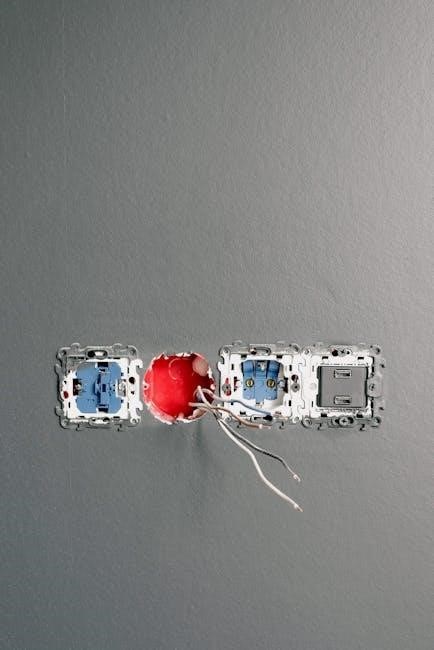
Installation Methods
Installation methods involve careful planning‚ precise measurements‚ and proper tools to ensure efficient water distribution. Mapping the area and using appropriate techniques ensures optimal coverage and system performance.
5.1 Trenching vs. Vibratory Plowing
Trenching and vibratory plowing are two primary methods for sprinkler system installation. Trenching involves digging shallow trenches for pipe placement‚ ensuring precise alignment and minimal damage to landscaping. Vibratory plowing uses a plow blade to cut and lay pipes simultaneously‚ reducing soil disruption and saving time. Trenching is cost-effective for small-scale projects but labor-intensive‚ while vibratory plowing is faster and suits large areas. Both methods require careful planning to avoid underground obstacles. The choice depends on project size‚ soil type‚ and desired system efficiency. Proper backfilling and compaction are critical for both techniques to ensure long-term system performance and reliability.
5.2 Connecting to Water Supply
Connecting a sprinkler system to a water supply requires careful planning to ensure reliability and efficiency. The water source‚ such as a municipal supply or well‚ must meet flow and pressure requirements. A dedicated service line is typically installed‚ sized based on system demand. A backflow preventer is essential to protect the water supply from contamination. The connection involves tapping into the main water line‚ installing valves‚ and ensuring proper pressure regulation. Testing the connection for leaks and pressure loss is critical before finalizing. Compliance with local plumbing codes and water authority regulations is mandatory for a safe and functional system.
5.4 Best Practices for System Installation
Best practices for sprinkler system installation ensure efficiency‚ reliability‚ and safety. Start with thorough planning‚ including site layout and material lists. Use high-quality materials and ensure proper sizing of pipes and components. Follow trenching safety guidelines‚ maintaining proper depth and avoiding utility lines. Install pipes with adequate support and protect them from corrosion. Ensure all connections are watertight and valves are easily accessible. Test the system post-installation for leaks and pressure imbalances. Document the installation for future maintenance. Adhere to local codes and manufacturer guidelines to guarantee optimal performance and compliance. Proper installation practices minimize issues and extend system lifespan.
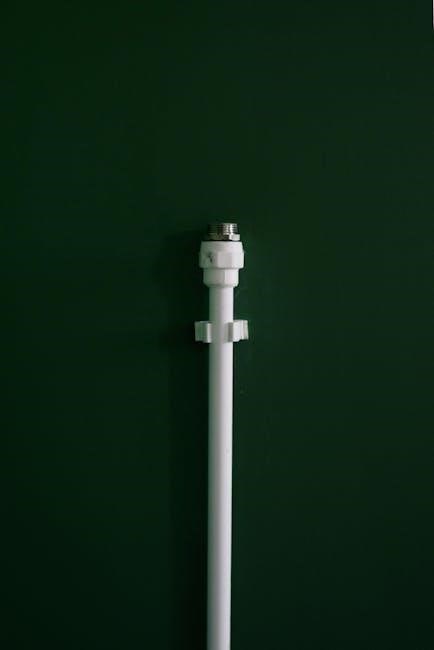
Maintenance and Troubleshooting
Regular inspections and cleaning of sprinkler components ensure optimal performance. Check for leaks‚ clogged nozzles‚ and proper water pressure. Addressing issues promptly prevents system failures and ensures reliability.
6.1 Regular Maintenance Requirements
Regular maintenance ensures sprinkler systems operate efficiently and reliably. Inspect sprinkler heads‚ pipes‚ and valves for damage or blockages. Check water pressure and flow rates quarterly. Clean or replace filters as needed to prevent clogs. Test the system annually to ensure proper coverage and alignment. Maintain a record of inspections and repairs for future reference. Address minor issues promptly to avoid major failures. Schedule professional inspections every 2-3 years to comply with local regulations and standards. Proper upkeep extends system lifespan and ensures optimal performance during critical situations.
6.2 Common Issues and Solutions
Common issues in sprinkler systems include clogged nozzles‚ leaks‚ and low water pressure. Clean or replace clogged nozzles regularly. For leaks‚ inspect pipes and fittings‚ tightening or replacing them as needed. Low pressure may require adjusting the system or upgrading components. Electrical issues‚ like controller malfunctions‚ often need professional attention. Poor coverage can be resolved by adjusting sprinkler angles or installing additional heads. Regularly check valves and backflow preventers to ensure proper function. Addressing these issues promptly ensures reliable operation and prevents costly repairs. Proper troubleshooting and timely solutions are essential for maintaining system efficiency and effectiveness.
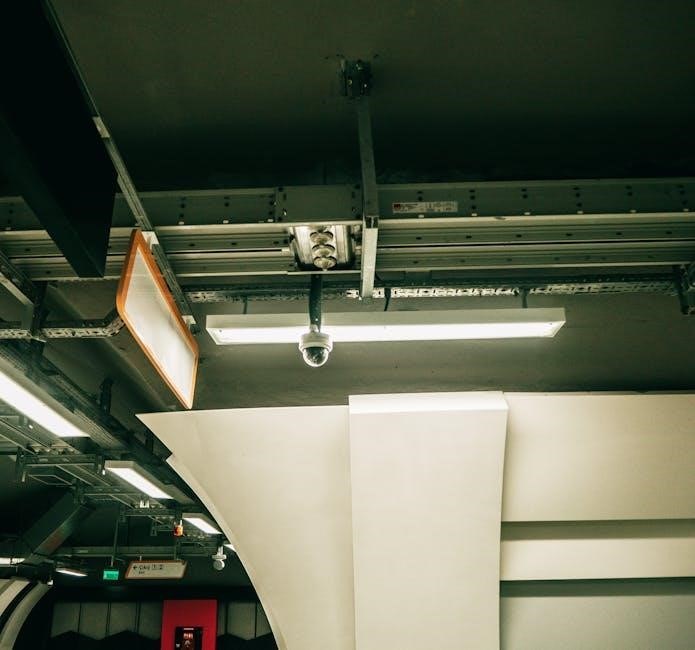
Optimization for Water Efficiency
Optimizing water efficiency in sprinkler systems balances conservation and performance. Advanced strategies and technologies help reduce water usage while maintaining optimal irrigation effectiveness.
7.1 Water Conservation Techniques
Implementing water-saving methods is crucial for efficient sprinkler systems. Techniques include using drought-resistant plants‚ adjusting spray patterns to minimize overspray‚ and installing rain sensors to prevent unnecessary watering. Smart controllers adapt irrigation schedules based on weather‚ reducing waste. Low-flow nozzles and precise zone design ensure water is delivered only where needed. Regular system audits identify leaks and inefficiencies‚ while pressure-regulating devices maintain optimal water flow. These strategies collectively reduce water consumption without compromising irrigation effectiveness‚ promoting sustainability in residential and commercial landscapes. Proper installation and maintenance further enhance water efficiency‚ ensuring long-term conservation benefits.
7.2 Smart Irrigation Controllers
Smart irrigation controllers are advanced devices that optimize water usage by adjusting sprinkler schedules based on real-time data. They utilize weather data‚ soil moisture levels‚ and plant requirements to ensure precise watering. These controllers can be programmed to adapt to seasonal changes‚ reducing water waste during rainy or cooler periods. Features like remote access via smartphones and integration with sensors enhance efficiency. By automating and refining irrigation practices‚ smart controllers reduce water consumption while maintaining healthy landscapes. They are a key component in modern sprinkler systems‚ offering both environmental benefits and cost savings for homeowners and businesses alike.
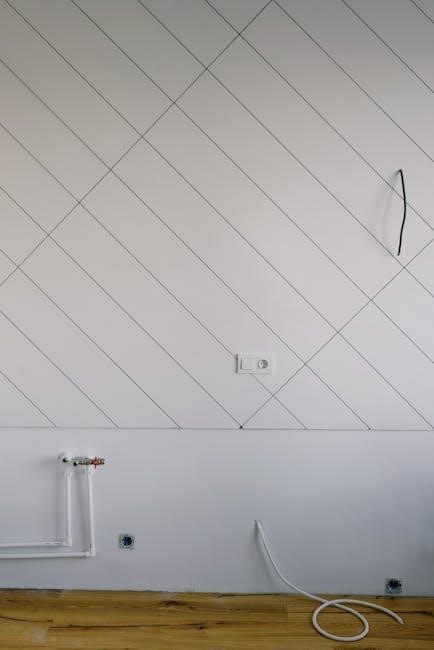
Case Studies and Examples
This section provides real-world examples of sprinkler system implementations‚ showcasing successful designs in residential and commercial settings. It highlights practical applications and lessons learned.
8;1 Successful Residential Sprinkler Designs
Residential sprinkler systems require careful design to ensure efficient water distribution and lawn coverage. A case study in a suburban home demonstrated how proper nozzle placement and zone division maximized water efficiency. The system used weather sensors to adjust watering schedules‚ reducing overwatering by 30%. Another example highlighted the importance of matching sprinkler types to yard layouts‚ with rotary nozzles for large areas and pop-up sprays for smaller sections. These designs not only improved aesthetics but also lowered water bills. Regular maintenance‚ like cleaning clogged nozzles‚ ensured long-term performance. These examples showcase how tailored designs meet specific residential needs effectively.
8.2 Commercial Sprinkler System Case Studies
A large corporate campus implemented a commercial sprinkler system‚ reducing water usage by 25% through smart controllers. The design incorporated weather sensors and flow sensors‚ ensuring precise irrigation. Another case study involved a retail property‚ where a central control system managed multiple zones‚ optimizing water distribution. Custom nozzles were used to cover irregular shapes‚ minimizing overspray. These systems highlighted the importance of scalability and adaptability in commercial settings. Regular audits and maintenance ensured long-term efficiency‚ making these designs exemplary models for water-conserving irrigation in large-scale applications. These case studies demonstrate how advanced designs can balance efficiency and performance in commercial landscapes.
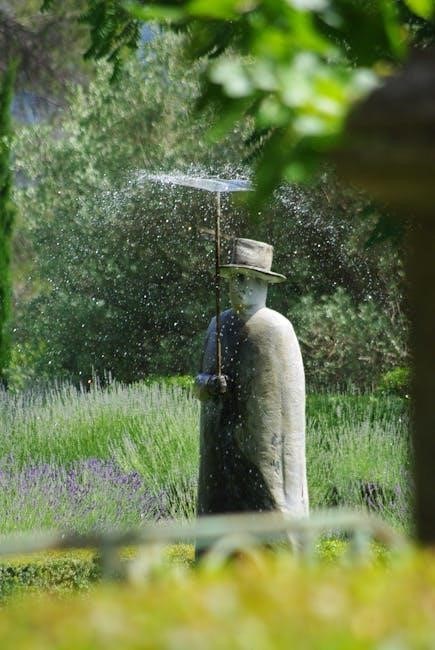
Final Design Checklist
A comprehensive review ensures system capacity‚ pressure loss‚ and valve functionality meet requirements. Verify all components are correctly sized and installed. Ensure proper documentation and testing.
9.1 Pre-Installation Checklist
A pre-installation checklist ensures all design and site requirements are met before work begins. Verify the sprinkler system design matches property dimensions and water availability. Check that all materials‚ such as pipes‚ fittings‚ and sprinkler nozzles‚ are on-site and compliant with local codes. Confirm the water supply pressure and flow rate align with the system’s needs. Ensure the installation site is clear of debris and obstacles. Review the layout plan for optimal coverage and efficiency. Verify that backflow preventers and valves are included and properly positioned. Finally‚ ensure all necessary permits and approvals are in place before starting the installation process.
9.2 Post-Installation Testing
Post-installation testing ensures the sprinkler system operates as designed. Begin with a pressure test to verify the system meets specifications. Conduct a flow test to confirm water volume and pressure at key points. Inspect sprinkler nozzles for proper alignment and coverage. Check valves and backflow preventers to ensure they function correctly. Flush the system to remove debris and sediment. Test the irrigation controller and sensors for accurate operation. Perform a visual inspection of all components and connections. Finally‚ conduct a full system test under normal operating conditions to identify and address any issues before final approval and handover to the user.

Additional Resources
Explore detailed PDF guides‚ technical manuals‚ and case studies for advanced sprinkler system design. Visit manufacturer websites like Rain Bird for comprehensive resources and design tools.
10.1 Recommended PDF Guides
Access comprehensive PDF guides on sprinkler system design from trusted sources like the Irrigation Association and Hunter Industries. These resources provide detailed insights into system layout‚ hydraulic calculations‚ and installation best practices. Download technical manuals from manufacturers like Toro and Rain Bird for specific product specifications and design recommendations. Additionally‚ refer to NFPA standards for fire suppression systems to ensure compliance. These guides are essential for engineers‚ contractors‚ and DIY enthusiasts‚ offering step-by-step instructions and case studies; Visit official websites or online marketplaces like Amazon to find these valuable resources.
10.2 Online Tools and Calculators
Utilize online tools and calculators to streamline sprinkler system design. Platforms like Hunter Industries and Rain Bird offer hydraulic calculators and spacing tools. The Irrigation Association provides interactive resources for system optimization. Websites like SprinklerCalculator.net offer free design tools for residential and commercial projects. These tools help calculate water pressure‚ flow rates‚ and pipe sizing. Many manufacturers also provide downloadable software for advanced designs. Online platforms ensure accuracy and efficiency‚ making the design process accessible for professionals and DIY enthusiasts alike. Explore these resources to enhance your sprinkler system planning and execution.